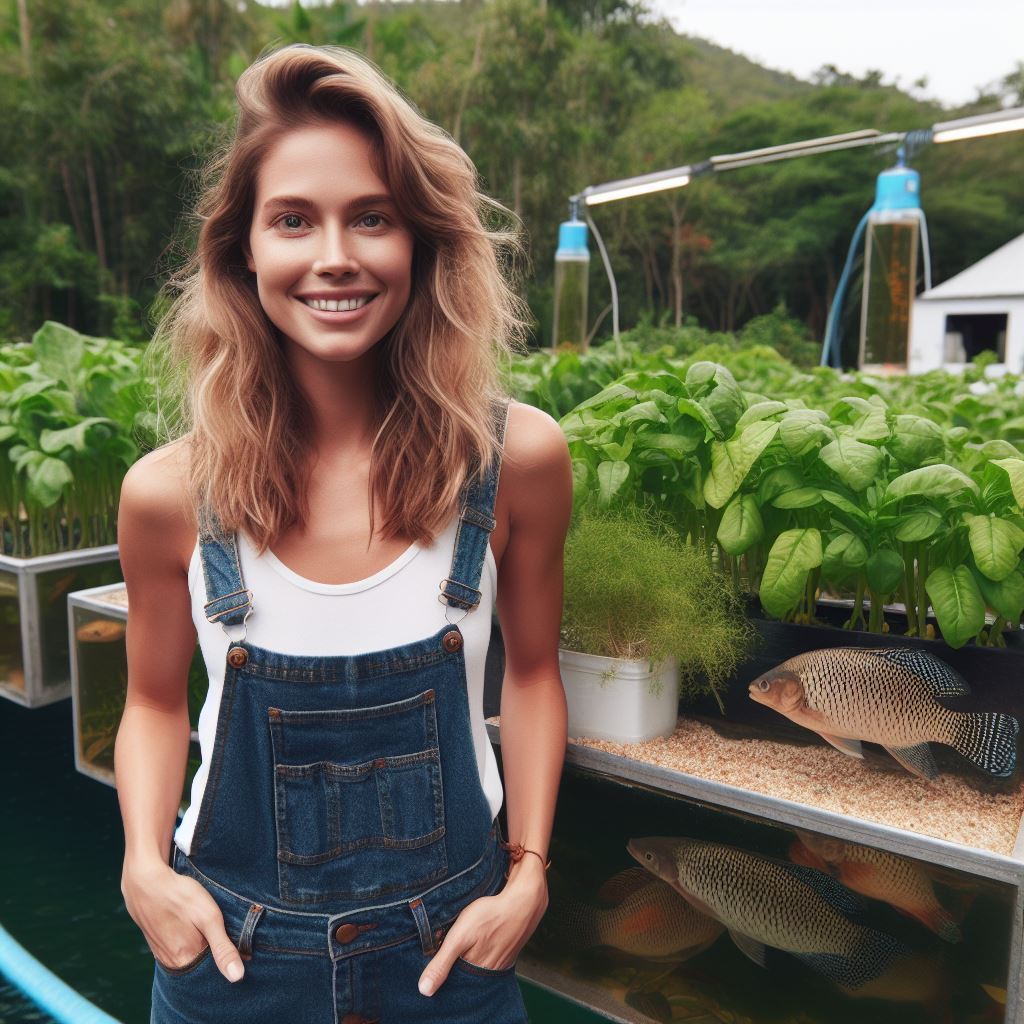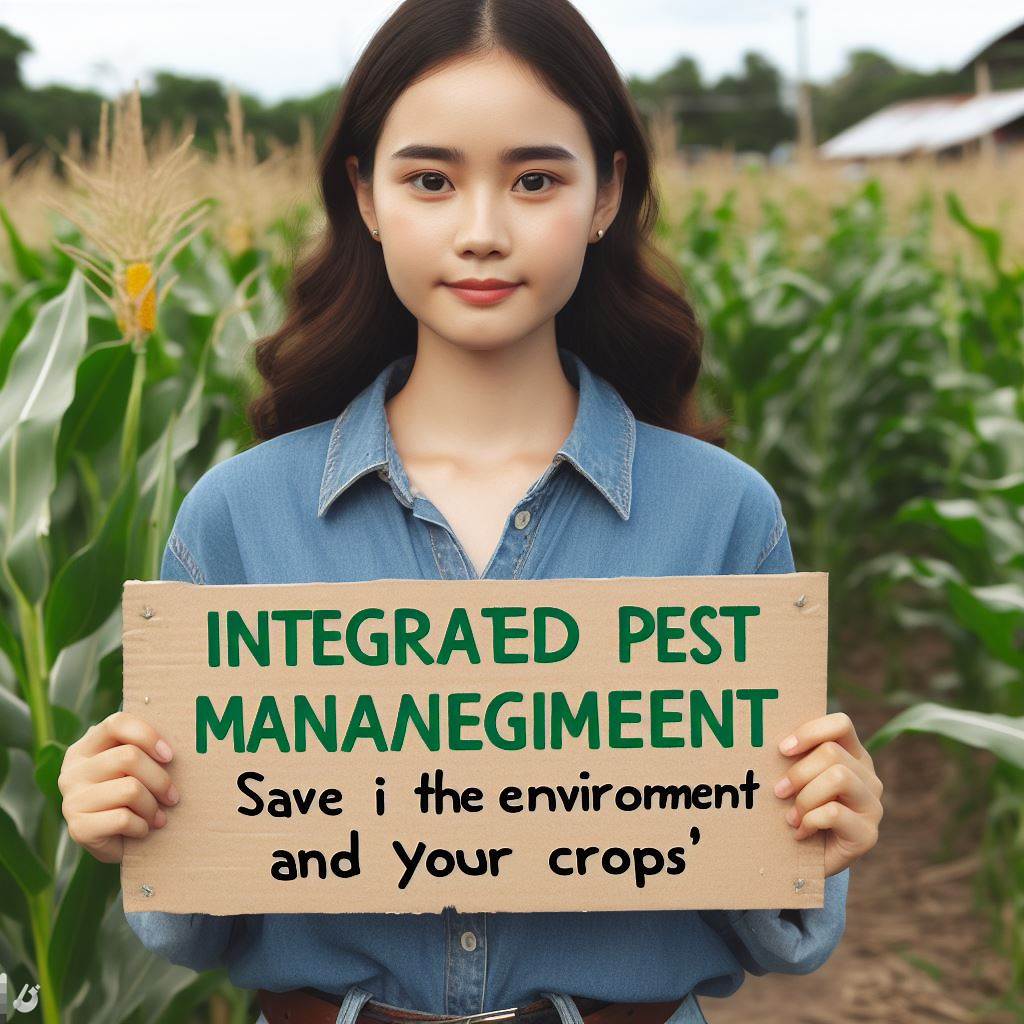Introduction
Aquaponics is a system that combines aquaculture and hydroponics, allowing for sustainable food production.
It utilizes the symbiotic relationship between fish and plants, where fish waste provides nutrients for plant growth, and plants purify the water for the fish.
Aquaponics is an innovative solution to address the challenges of traditional food production systems.
It offers several advantages such as minimizing water usage, reducing chemical inputs, and maximizing yield in limited space.
A sustainable food production system like aquaponics is crucial due to the increasing global population and limited resources. It allows for the production of fresh, healthy, and locally grown food all year round.
Aquaponics minimizes water usage by recycling the water within the system, making it a more sustainable alternative to traditional irrigation methods.
This is especially important as water scarcity becomes a pressing issue in many parts of the world.
By eliminating the use of chemical fertilizers and pesticides, aquaponics reduces the environmental impact of food production.
This promotes healthier food choices, free from harmful residues, and contributes to cleaner air and water.
Moreover, aquaponics allows for year-round production in controlled environments, making it suitable for urban areas with limited space for conventional farming.
This promotes food security and reduces dependence on imported produce.
Aquaponics is a sustainable food production system that offers numerous benefits.
Its efficient use of resources, reduction of environmental impact, and ability to provide fresh food year-round make it a viable solution in addressing future food needs.
The Components of Aquaponics
Aquaculture
- Fish Tanks: Provide a controlled environment for fish to live and grow.
- Fish Species Selection: Choose fish species that are suitable for aquaponics and can coexist with plants.
- Fish Feeding and Waste Production: Feed the fish a balanced diet and manage waste production for nutrient cycling.
Hydroponics
- Grow Beds: Act as containers for plant roots and also serve as a biofilter for water purification.
- Plantation Selection: Select plants that thrive in the aquatic environment and provide economic benefits.
- Nutrient Delivery System: Deliver the necessary nutrients to plants using the recirculating water from fish tanks.
Aquaponics, a sustainable food production system, combines aquaculture and hydroponics to create a symbiotic relationship between fish and plants.
By mimicking the natural nitrogen cycle, aquaponics offers an efficient and environmentally friendly way to grow food.
Transform Your Agribusiness
Unlock your farm's potential with expert advice tailored to your needs. Get actionable steps that drive real results.
Get StartedAquaculture
1. Fish Tanks
Fish tanks are an essential component of aquaponics systems. They provide a controlled environment for fish to live and grow.
The tanks should be properly sized to accommodate the chosen fish species and allow for optimum water circulation and filtration.
Good water quality is crucial for the health and growth of the fish.
2. Fish Species Selection
Selecting the right fish species is crucial for the success of an aquaponics system.
The chosen fish should be able to thrive in the specific environmental conditions provided by the system.
Tilapia, trout, and catfish are popular choices for aquaponics due to their ability to tolerate varying water temperatures and water quality.
3. Fish Feeding and Waste Production
Feeding the fish a balanced diet is important for their growth and health.
Commercial fish feed is typically used, but some aquaponics enthusiasts also incorporate homemade feed options.
As the fish eat and metabolize the food, they produce waste rich in nutrients such as ammonia. This waste serves as a valuable fertilizer for the plants in the hydroponics component.
Hydroponics
1. Grow Beds
The grow beds in an aquaponics system act as containers for plant roots.
They are usually filled with a suitable growing medium such as expanded clay pellets or gravel.
The beds function not only as a support structure for plants but also as a biofilter for water purification. Beneficial bacteria convert fish waste into forms that can be easily absorbed by the plants.
2. Plantation Selection
Selecting the right plants for aquaponics is essential. Leafy greens like lettuce, herbs, and other fast-growing vegetables thrive in the nutrient-rich water provided by the fish waste.
Some fruits like tomatoes and strawberries can also be grown successfully in aquaponics systems.
The plant selection should take into account the available space, light requirements, and temperature range of the system.
3. Nutrient Delivery System
A well-designed nutrient delivery system ensures that plants receive the necessary nutrients from the fish waste.
Water from the fish tanks is pumped into the grow beds, providing the plants with essential nutrients.
As the plants absorb the nutrients, the water is filtered and returned to the fish tanks, completing the recycle loop.
This closed-loop system minimizes water and nutrient wastage, making it highly efficient.
Aquaponics combines aquaculture and hydroponics to create a sustainable food production system.
The aquaculture component involves fish tanks, fish species selection, and managing fish feeding and waste production.
On the other hand, hydroponics involves grow beds, selecting suitable plants, and establishing a nutrient delivery system.
Together, these components form a harmonious ecosystem that maximizes resource utilization and produces fresh and healthy food.
Read: Renewable Energy in Farms: Sun, Wind, Biomass
Showcase Your Farming Business
Publish your professional farming services profile on our blog for a one-time fee of $200 and reach a dedicated audience of farmers and agribusiness owners.
Publish Your ProfileHow Aquaponics Works
Nitrogen Cycle
- Fish Waste Conversion to Ammonia
- In aquaponics, fish waste is converted into ammonia, a toxic compound for fish.
- Beneficial Bacteria
- Beneficial bacteria, like Nitrosomonas, convert ammonia into nitrites.
- Ammonia Conversion to Nitrate
- Nitrites are further broken down by Nitrobacter bacteria to form nitrates.
- Nitrate Absorption by Plants
- Nitrates act as nutrients for plants and are absorbed through their roots.
Symbiotic Relationship between Fish and Plants
- Fish Waste as Nutrients
- Fish waste, specifically the ammonia and nitrates produced, is used as food for plants.
- Plant Filtration of Water for Fish
- Plants act as natural filters, removing excess nutrients from the water, creating a healthier environment for fish.
Aquaponics, a fusion of aquaculture and hydroponics, fosters a symbiotic relationship between fish and plants, ensuring mutual growth benefits.
The nitrogen cycle, pivotal in this method, transforms fish waste into nutrients for plants, creating a self-sustaining ecosystem.
Nitrosomonas and Nitrobacter bacteria convert toxic ammonia into nitrates, enriching water for plant growth while purifying it for fish.
This eco-friendly system obviates the need for synthetic fertilizers and diminishes water pollution risks associated with traditional aquaculture.
The efficiency of aquaponics shines in resource maximization, with fish enjoying clean water and plants thriving on essential nutrients.
Notably, this method conserves water through a recirculating system, offering promise for regions grappling with water scarcity.
Aquaponics emerges as a sustainable solution, intertwining fish and plant cultivation to create a harmonious ecosystem, fostering resource efficiency, environmental stewardship, and potential contributions to future food security.
Read: Polyculture Farming: Diverse Crops, Better Yield

Advantages of Aquaponics
Resource Efficiency
- Water Conservation: Aquaponics uses 90% less water compared to traditional soil farming.
- Energy Efficiency: The closed-loop system requires minimal energy inputs for operation.
Elimination of Chemical Inputs
- Reduced Need for Pesticides: The natural ecosystem in aquaponics helps control pests, reducing pesticide use.
- Organic and Chemical-Free Produce: Aquaponics produces organic and chemical-free fruits, vegetables, and herbs.
Year-Round Production
- Climate Control: Aquaponic systems can be controlled to provide optimal conditions for year-round production.
- Continuous Harvesting: With proper planning and management, aquaponics enables continuous harvesting throughout the year.
Aquaponics offers numerous advantages over traditional farming methods, making it a sustainable food production system.
Resource Efficiency
One of the significant advantages of aquaponics is its resource efficiency.
By combining aquaculture (fish farming) and hydroponics (soilless plant cultivation), aquaponics optimizes the use of resources while minimizing waste.
- Water Conservation: Compared to traditional soil farming, aquaponics uses 90% less water. The water in the system is continually circulated and reused, reducing the need for constant irrigation and minimizing water loss due to evaporation.
- Energy Efficiency: Aquaponics operates on a closed-loop system that requires minimal energy inputs. The recirculating pumps and aeration systems are the primary energy consumers, but advancements in technology have made them more energy-efficient in recent years.
Elimination of Chemical Inputs
Aquaponics eliminates the need for chemical inputs, making it an environmentally friendly method of food production.
- Reduced Need for Pesticides: The natural ecosystem in aquaponics creates a balance that helps control pests and diseases. This reduces the reliance on synthetic pesticides, minimizing chemical contamination in food.
- Organic and Chemical-Free Produce: Aquaponics produces fresh and healthy produce that is free from harmful chemicals. Plants grow naturally using only fish waste as organic fertilizer, resulting in high-quality, nutritious food.
Year-Round Production
Aquaponics allows for year-round production, providing a consistent supply of fresh food regardless of the season.
- Climate Control: Aquaponic systems can be controlled to create optimal growing conditions regardless of external weather. By adjusting factors such as temperature, humidity, and lighting, farmers can cultivate crops throughout the year.
- Continuous Harvesting: With proper planning and management, aquaponics enables continuous harvesting. Since the plants receive a steady supply of nutrients and water, they grow faster, allowing for multiple harvests in a shorter span of time.
Aquaponics provides resource efficiency, eliminates chemical inputs, and facilitates year-round production.
By harnessing the power of symbiotic relationships between fish and plants, this sustainable food production system offers significant advantages for feeding the world’s growing population.
Read: Crop Rotation: Boosting Soil Health Naturally
Challenges and Limitations of Aquaponics
Initial Investment
- Setup Costs: Setting up an aquaponics system requires a significant initial investment.
- Maintenance Expenses: Ongoing maintenance and upkeep of the system can be costly.
System Complexity and Learning Curve
- Technical Knowledge Required: Operating an aquaponics system requires a certain level of technical expertise.
- Troubleshooting and Monitoring: Solving issues and monitoring the system’s health can be challenging.
Limited Range of Crops
- Adaptation to Aquaponic Conditions: Not all crops can easily adapt to the aquatic environment provided by aquaponics.
- Crop Selection Constraints: There are limits to the variety of crops that can be effectively grown in aquaponics.
Read: Agroforestry: Combining Trees and Crops Wisely
Case Studies and Success Stories
Sustainable Urban Farming Ventures
- Rooftop Aquaponics in City Centers
- One successful example of sustainable urban farming is the implementation of rooftop aquaponics systems in city centers
- These systems utilize the available rooftop space for growing both fish and plants
- By utilizing vertical farming techniques, these ventures maximize production while minimizing the use of space and resources.
- Community Gardens and Local Produce
- Another successful approach to sustainable urban farming is the establishment of community gardens.
- These gardens provide fresh and locally grown produce to the community, reducing the carbon footprint associated with transportation.
- By involving residents in the cultivation of their food, community gardens also promote a sense of ownership and connection to the environment.
Commercial Aquaponics Farms
- Large-Scale Production and Distribution
- Commercial aquaponics farms demonstrate the potential for large-scale sustainable food production.
- These farms utilize advanced technology and automation to produce high yields of fish and plants.
- Through efficient water usage and carefully balanced nutrient cycles, they achieve optimal productivity while minimizing waste.
- By establishing partnerships with local restaurants and grocery stores, these farms also ensure the distribution of fresh, locally sourced products.
- Profitability and Economic Viability
- One of the key success factors of commercial aquaponics farms is their profitability and economic viability.
- By implementing efficient operational processes and leveraging economies of scale, these farms can generate substantial revenue.
- The demand for sustainable and locally sourced food products further enhances their market potential.
- In addition, the reduced reliance on chemical inputs and the integration of natural pest control methods contribute to cost savings and increased profitability.
These case studies and success stories highlight the potential of aquaponics as a sustainable food production system.
Whether it’s through urban farming ventures or commercial farms, aquaponics offers solutions to the pressing challenges of resource scarcity and environmental degradation.
By harnessing the power of symbiotic relationships between fish and plants, this innovative approach can provide fresh, nutritious food while conserving water and reducing waste.
The economic benefits and profitability associated with aquaponics make it an attractive option for both small-scale and large-scale operations.
As more individuals and businesses recognize the advantages of this system, it has the potential to revolutionize the way we produce and consume food in a sustainable and responsible manner.
Conclusion
Recap of the Aquaponics as a Sustainable Food Production System
Throughout this blog section, we have explored the concept of aquaponics and its significant potential as a sustainable food production system.
We have seen how this innovative method combines aquaculture and hydroponics, allowing for the cultivation of both fish and plants in a symbiotic environment.
Aquaponics offers numerous benefits such as efficient resource utilization, reduction in water consumption, elimination of chemical fertilizers, and the production of high-quality organic food.
The closed-loop system creates a harmony between aquatic animals and plants, creating a mutually beneficial cycle that mimics nature.
We have discussed the various components required for the successful implementation of aquaponics, including the fish tank, grow bed, water pump, and bacterial colony, all of which work together to maintain a stable and thriving ecosystem.
Encouragement for Future Implementation and Research
As the world faces increasing food security challenges and environmental concerns, aquaponics presents itself as a viable solution.
Its sustainable nature and ability to produce substantial yields in limited space make it an attractive option for both urban and rural areas.
However, further research and development are necessary to optimize aquaponic systems and make them more accessible and cost-effective.
Experimentation with different fish and plant species, nutrient management techniques, and system automation can enhance efficiency and productivity.
It is crucial for policymakers, researchers, and entrepreneurs to invest in aquaponics and explore its potential on a larger scale.
By embracing this sustainable food production system, we can alleviate pressure on conventional agriculture, conserve natural resources, and ensure a reliable food supply for future generations.
Aquaponics has emerged as a promising solution to address the complex challenges of food security and environmental sustainability.
Through continued innovation and collaboration, we can unlock its full potential and create a brighter future for our planet.




